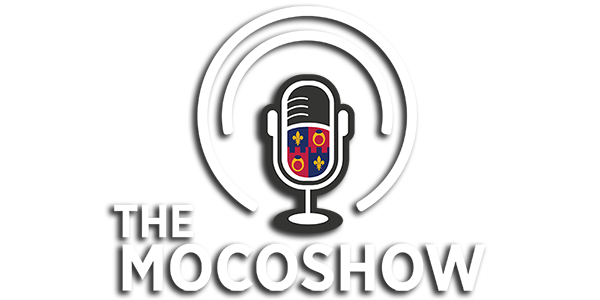
Per Montgomery County: Montgomery County ranks as the healthiest county in Maryland in the annual County Health Rankings (CHR). According to the 2023 rankings, the five healthiest counties in Maryland are Montgomery County, followed by Howard County, Frederick County, Calvert County and St. Mary’s County. The CHR, a collaboration of the University of Wisconsin Population Health Institute and the Robert Wood Johnson Foundation, annually compares counties within each state on more than 30 factors that impact health, including social determinants such as education, jobs, housing, exercise, commuting times and more.
“I am proud that Montgomery County is again the healthiest county in Maryland,” said County Executive Marc Elrich. “While there remains work to be done, I want to thank our health officials, hospitals, community based nonprofit health providers and other stakeholders for continuing to emphasize the importance of improving health outcomes for all of our community’s residents.”
Highlights from the 2023 report include:
- Low rates of physical inactivity–Montgomery County has a 17 percent rate of physical inactivity, compared to Maryland at 21 percent.
- High accessibility to exercise opportunities—Montgomery County has a 100 percent rate, compared to Maryland at 92 percent.
- Low rates of alcohol-impaired driving deaths—Montgomery County has a 22 percent rate, compared to Maryland at 28 percent.
- Low rates of uninsured residents–only 7 percent of Montgomery County residents are uninsured.
Several factors influence how well and how long people live. These include behavioral habits such as physical activity, nutrition, and smoking, in addition to factors from the built environment, such as access to affordable housing and well-paying jobs.
“We are pleased to see that the county ranks very highly in the aggregated health outcomes,” said Kisha Davis, the County health officer. “The County has focused for several years on improving population health and chronic disease management. By engaging hospitals, multicultural health organizations, community partners, and other key stakeholders, we can keep making progress. We continue working to improve the underlying factors that promote health for all of our residents and to eliminate the disparities that lay beneath these great results.”
To see the full report, visit the County Health Rankings and Roadmaps website.

Per the State of Maryland (3.13.23): Governor Wes Moore today announced Maryland’s adoption of the multi-state Advanced Clean Cars II rule, a major step in the state’s acceleration to improve air quality and combat the effects of climate change. Maryland is moving quickly to adopt the regulation, which requires manufacturers to continuously increase the share of electric vehicles they sell, reaching 100% of passenger car and light truck sales by model year 2035.
“Today, we’re talking about a major transformation that is going to define this administration—and that’s how we turn Maryland from a state powered by oil and gas to a state powered by clean energy,” said Governor Moore. “I am confident that the state of Maryland can and will lead the clean energy revolution.”
The Advanced Clean Cars II rule is a vehicle emissions standard first adopted by California using its unique authority under the federal Clean Air Act. Now that California has adopted the standards, other states can follow suit.
Maryland has the most ambitious climate goals of any state in the nation and is recognized as a national leader in reducing greenhouse gas emissions while growing our state economy. The Advanced Clean Cars II rule, coupled with strong federal and state incentives, will be one of the state’s most important emissions reduction measures.
According to a Maryland Department of the Environment analysis, 383,000 fewer new gas-powered vehicles would be sold under the new rule by 2030, rising to 1.68 million fewer conventional vehicles by 2035. Between 2026 and 2040, the rule will deliver additional vehicular reductions of more than 6,000 tons of nitrogen oxides, as well as reduction of vehicular and power plant carbon dioxide emission by more than 82 million metric tonnes. By 2040, these reductions may potentially provide net in-state health benefits equal to about $39.9 million per year due to decreases in respiratory and cardiovascular illness and associated lost work days.
“The Advanced Clean Cars II regulation is a big step toward cleaner air and a more aggressive response to the threats posed by climate change,” said Maryland Department of the Environment Secretary Serena McIlwain. “This rule will help position us to meet the goals of our Climate Solutions Now Act and 2030 Greenhouse Gas Reductioct Act Plan while bringing economic benefits to Marylanders.”
According to Baltimore Gas and Electric, electric vehicles cost roughly one fourth as much to drive as gasoline cars in Maryland. Electric vehicles also generally have lower maintenance costs, and there are state and federal tax incentives for their purchase. In an effort to help make electric vehicles available to all Marylanders, the rule also features flexibility that encourages manufacturers to provide electric vehicles in overburdened and underserved communities, including community-based ridesharing or car sharing programs.
“As a business at the forefront of mobility solutions, we know that technology and market demand are both ready to support the transition to clean vehicles,” said Siemens Head of External Affairs and Policy, Northeast/Mid-Atlantic Ryan Dalton. “Strong state standards that reflect the escalating consumer demand and set clear expectations for market growth over the coming years are key to managing the transition. We support the adoption of the Advanced Clean Cars II rule in Maryland because it is the best way to attract investment and provide predictability for manufacturers, companies, workforces, and consumers alike.”
To adopt the rule as quickly as possible, the Maryland Department of the Environment presented the proposed regulation to the state’s Air Quality Control Advisory Council at its first meeting of the year this morning. The council voted to recommend that the department move forward in proposing a regulation to enact the new standards. MDE will follow the process for a proposed regulation,which includes a public hearing and opportunity for public comment, to allow for a regulation to take effect in September.
“By acting so immediately to advance zero-emission vehicles and reduce harmful emissions, Governor Moore and Secretary McIlwain are backing up their pledge to position Maryland as a national leader in fighting climate change and its contribution to environmental injustices,” said Executive Director of the Maryland League of Conservation Voters Kim Coble. “The Advanced Clean Cars II Rule is a proven policy for reducing greenhouse gasses from transportation and will jumpstart Maryland’s implementation of the landmark Climate Solutions Now Act.”
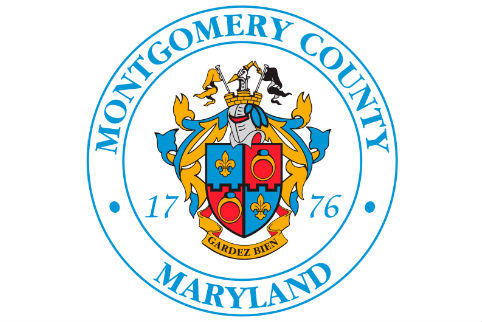
Per Montgomery County: Montgomery County health officials today released “Health Survey in Montgomery County, MD 2022,” a report on local health status and behaviors. While the County ranks first for most health outcomes and health factors among Maryland counties, the unavailability of sub-county level data makes the understanding of health variations within the community difficult and can prevent planning efforts and resource allocation for population subgroups and communities. The findings from the health survey will help public health officials and policy makers target specific population and communities at high risk to address health equity and to improve population health.
The County’s Department of Health and Human Services (DHHS) worked with Rockville-based Westat to design a mail-in survey to assess community health needs for Montgomery County residents aged 18 and older. The report is the first primary quantitative data collected to assess community health needs and will complement findings from other secondary quantitative data and qualitative data collected from key informant interviews and focus groups meetings. The findings will be included in Healthy Montgomery’s upcoming Community Health Needs Assessment.
“In public health, data is everything, and if we can get more localized data, that’s even better,” said James Bridgers, acting director of DHHS and chief of its public health services. “Despite the availability of county-level data from some federal and state level surveys, it is essential for us to monitor local data trends over time through the regular collection of local health survey data. This is an important guide to help in our efforts to reduce health disparities in our community.”
The report summarizes findings from the health survey, including demographics of respondents, health and health related priorities, access to health care, impact from COVID-19 and health status and health related behaviors. Key findings of the report include:
- Overall, mental health (18.3 percent) is the most important health problem and availability/access to insurance (12.8 percent) is the most important social/environmental factor.
- Poor eating habits (17.4 percent) are the most important risky behavior and low crime/safe neighborhoods (20.9 percent) are the most important factor making up a healthy community.
- Cost (33.3 percent) was the most important reason for not getting health care and 9.6 percent of respondents did not have health insurance. More than 75 percent (76.4 percent) of residents visited a health care provider last year and 75.9 percent of respondents have a primary care provider (PCP).
- 23.5 percent of respondents reported not participating in any physical activity and 61.6 percent reported drinking at least one alcoholic beverage in the past 30 days.
- 7.6 percent of respondents reported never having blood cholesterol checked, and 10.4 percent of respondents reported their last dental visit to be five or more years ago.
- 2.6 percent of respondents reported that they smoke daily and 10.2 percent reported e-cigarette/vaping use.
- Depressive disorder (25.7 percent) was the most common health condition, followed by arthritis (21.7 percent) and diabetes (15.9 percent).
On the COVID-19 impact topics, 52.3 percent of respondents indicated a family member or friend outside their household has been diagnosed with COVID-19, 15.7 percent reported that they have never received the flu vaccine and 14 percent of respondents reported that personal and family finances were the area with the highest COVID-19 impact. Health care assistance (8.4 percent) was the area needed most by respondents and less than one percent (0.6 percent) reported that they were not interested in COVID-19 testing.
Results are stratified by sex, age, race/ethnicity, and geographic areas to examine variations by subpopulations and communities across Montgomery County.
To view the full report, visit the publication and report section of the DHHS website. For information about Healthy Montgomery, visit their website.
# # #
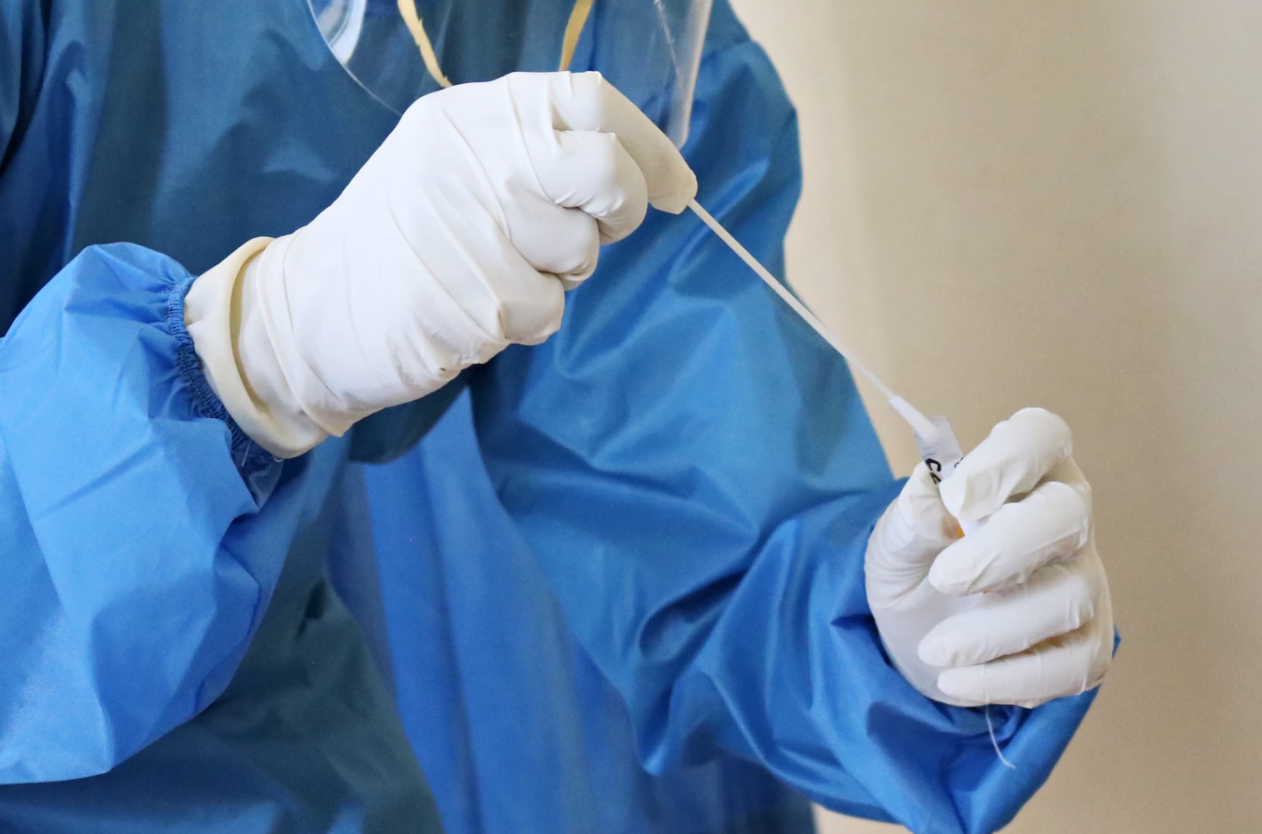
Per MCPD: The COVID-19 testing and vaccination clinics operated by Montgomery County will have several schedule changes during the upcoming Christmas and New Year’s holidays. All County testing and vaccination sites will be closed on Saturday, Dec. 24, Sunday, Dec. 25, Saturday, Dec. 31, and Sunday, Jan. 1. The Montgomery College campus sites in Rockville and Germantown also will be closed Saturday, Dec. 24 through Tuesday, Jan. 2.
There will three testing and vaccination sites open on Monday, Dec. 26 and Monday, Jan. 2.
Dennis Avenue Health Center
2000 Dennis Avenue, Silver Spring
10 a.m. – 7 p.m.
East County Regional Service Center
3300 Briggs Chaney Road, Silver Spring
9 a.m. – 6 p.m.
Upcounty Regional Services Center
12900 Middlebrook Road, Germantown
10 a.m. – 7 p.m.
Take-home rapid test kits and masks provided at libraries will not be available when libraries are closed Dec. 25 and 26 and Jan. 1 and 2. Beginning on Dec. 30, County testing clinics will be walk-in only, unless otherwise stated, and no appointments will be needed.
The County’s COVID-19 email box ([email protected]) will be discontinued as of Dec. 30. If anyone has a question about COVID-19, they can call the COVID-19 call center at 240-777-2982.
Find out more information on COVID-19 testing and vaccination on the County’s COVID-19 website.
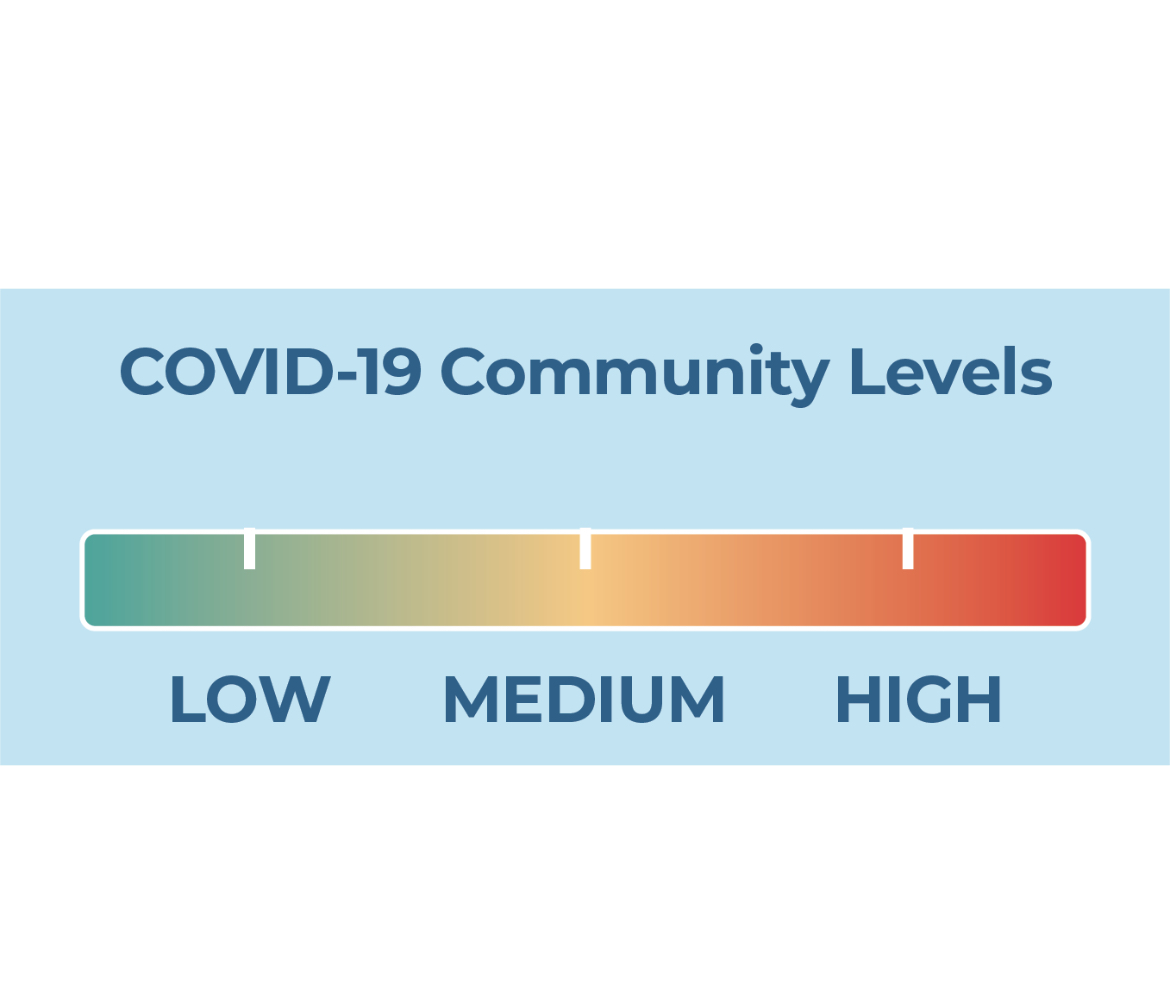
Per Montgomery County: With the recent rise in COVID-19 cases in the National Capital Region, Montgomery County officials today offered precautionary recommendations to prevent further community spread of the virus. The County’s COVID-19 case rate has risen steadily over the last month and is now more than double the recent low on Nov. 28.
The increase in transmission has occurred both in the County and in other jurisdictions around the region. Combined with influenza cases and other significant respiratory disease, emergency department visits and hospitalization rates have increased as well.
“Our current surge in cases is coming right before the holidays and with increased travel and gatherings, there is concern that transmission may increase and strain the health care system,” said County Executive Marc Elrich. “I encourage all residents to take extra precautions and to make sure they are up to date on vaccinations, including getting a flu vaccine. We want people to enjoy being with family and friends, but we want to do it safely.”
Although the County is currently an area of low-level community transmission as defined by the Centers for Disease Control and Prevention (CDC), the case rate is quickly approaching medium-level community transmission.
Based on the advice of Montgomery County Health Officer Kisha Davis, it is strongly recommended that people voluntarily engage in the following precautionary measures to slow transmission, protect the most vulnerable populations and keep hospitalizations down:
- Use a well-fitting face covering during visits to congregate places and indoor spaces with limited social distancing.
- Use of testing and test-to-treat antiviral medication after returning from travel or gatherings.
- Stay up to date on COVID-19 vaccinations, including booster-shots.
- The County continues to offer free at-home rapid test kits and N-95 masks at libraries.
Visit the County’s COVID-19 data dashboard to review the latest metrics and key indicators. Find additional information on masks and transmission levels on the COVID-19 website.
If you are not vaccinated, find free vaccination clinics at www.GoVAXMoCo.com. If you feel sick or think you may have been exposed to COVID-19, get tested. Find free testing clinics at www.MoCoCOVIDtesting.org.
For the latest COVID-19 updates, visit the County’s COVID-19 website and follow Montgomery County on Facebook @MontgomeryCountyInfo and Twitter @MontgomeryCoMD.
# # #
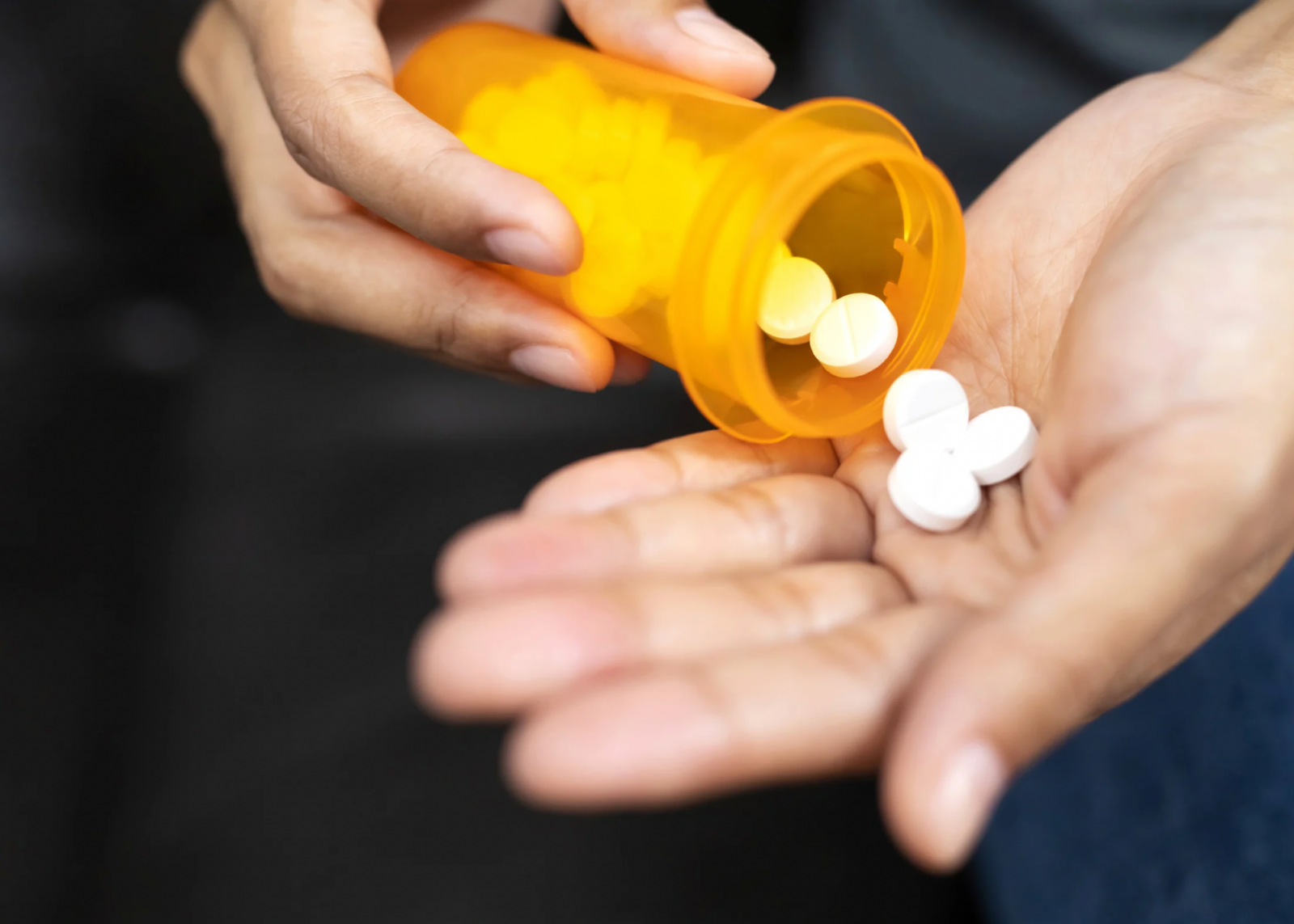
Montgomery County Public Schools sent out the following community message from MCPS Medical Officer Patricia Kapunan on Friday, December 9:
“Dear MCPS Community,
I am reaching out to make sure students, staff, and families are aware of a very dangerous trend in substance use affecting our community. Synthetic opioids, specifically illegally made fentanyl, are increasingly responsible for overdoses and overdose deaths. In 2021, over 70% of all overdoses in Montgomery County were fentanyl related including substances laced with fentanyl or substances that look like something else (e.g., Xanax, Adderall, Percocet, or oxycodone) but had fentanyl in them. MCPS continues to work diligently alongside local government authorities and community partners on a comprehensive and coordinated approach to this dangerous epidemic.
What is illicit fentanyl?
Fentanyl is a prescription medication for pain that is 50-100 times more powerful than morphine. The type of fentanyl driving overdose deaths is illegally made and sold in the form of powder, pills, liquid, or nasal sprays. Other drug products like marijuana, cocaine, heroin or illegally sold pills thought to be prescription medicine may be laced with illicit fentanyl, without the knowledge of the user.
Why are youth taking drugs, such as fentanyl and how are they getting them?
Teenagers and even younger children may use illicit substances for multiple reasons. Experimentation or peer pressure may prompt a single episode of use that leads to further problems. Youth struggling with mental health symptoms, pain, or already using other drugs may be more likely to experiment or have problems related to substance use. With fentanyl, it is important to know that individuals may not even know they are taking it, as it is often incorporated into other substances. Drug traffickers may use fentanyl to increase the potency of their products. They also use social media to promote and sell drugs, making them more available to youth from peers or directly from online sources or through social media.
Why is illicit fentanyl so dangerous?
Because fentanyl is such a highly powerful opioid, very small amounts can lead to a potentially fatal overdose from even one use, and the person may not even know that the drug taken contained illicit fentanyl. The potency of fentanyl also means that individuals seeking temporary effects for relaxation, pain relief, or pleasure may find themselves quickly addicted. Once addicted, they may need to use as frequently as every 2-3 hours to avoid very uncomfortable withdrawal symptoms, including extreme nausea, vomiting, diarrhea, anxiety, sweating or chills.
What can adults do to help?
Parents and other caregivers can educate themselves and foster conversations with children about the dangers of drug use, specifically fentanyl and how to avoid use, family expectations around use, and the availability of help and support. Recognizing potential signs of substance use, trauma, and mental health symptoms will help youth and families access support earlier and help avoid dangerous or fatal outcomes.
Naloxone (Narcan) is an emergency medication given by nasal spray that can work instantly to reverse opioid overdose. It is important to know that the effects of naloxone are temporary and when used to treat an overdose, individuals will still need emergency medical attention (911). The effectiveness also depends on the potency of the drug and dose taken, so higher doses of naloxone may be required for powerful opioids like illicit fentanyl. Maryland’s Good Samaritan Law protects individuals from prosecution from certain crimes, who are providing assistance to another person experiencing a medical emergency related to alcohol or other drugs.
As part of ensuring medication safety in their homes, families should strongly consider keeping naloxone available, especially if they store prescription opioids or have concern that youth may be at risk for dangerous opioid use. Montgomery County residents can access naloxone, and training on how to use it, for free without an individual prescription. If you would like training on naloxone administration you can register at this link. To access free naloxone, Montgomery County residents can call DHHS Harm Reduction Services at 240-777-1836.
What is Montgomery County Public Schools doing about illicit fentanyl in our community?
MCPS remains committed to a safe and substance-free school environment, and to our mission of supporting students and all those in our community who work to ensure their success and well-being. The Office of the School System Medical Officer is working closely with the Montgomery County Department of Health and Human Services (DHHS) and other community partners within the Montgomery Goes Purple initiative to develop community-wide efforts in prevention, harm reduction, and treatment. These efforts include initiatives that broadly address substance use and mental health, and also focus on the specific problems of illicit fentanyl. Our shared goal is to ensure school-based programs integrate with local and county-wide efforts, which reach all children and families in our community.
The opioid crisis continues to have devastating effects nationwide and also in our community, and everyone can play a role in fighting this epidemic. Let’s take this opportunity to work together to protect our youth and families, and to advocate for their healthy future.
Sincerely,
Patricia Kapunan, M.D., M.P.H.
MCPS Medical Officer”
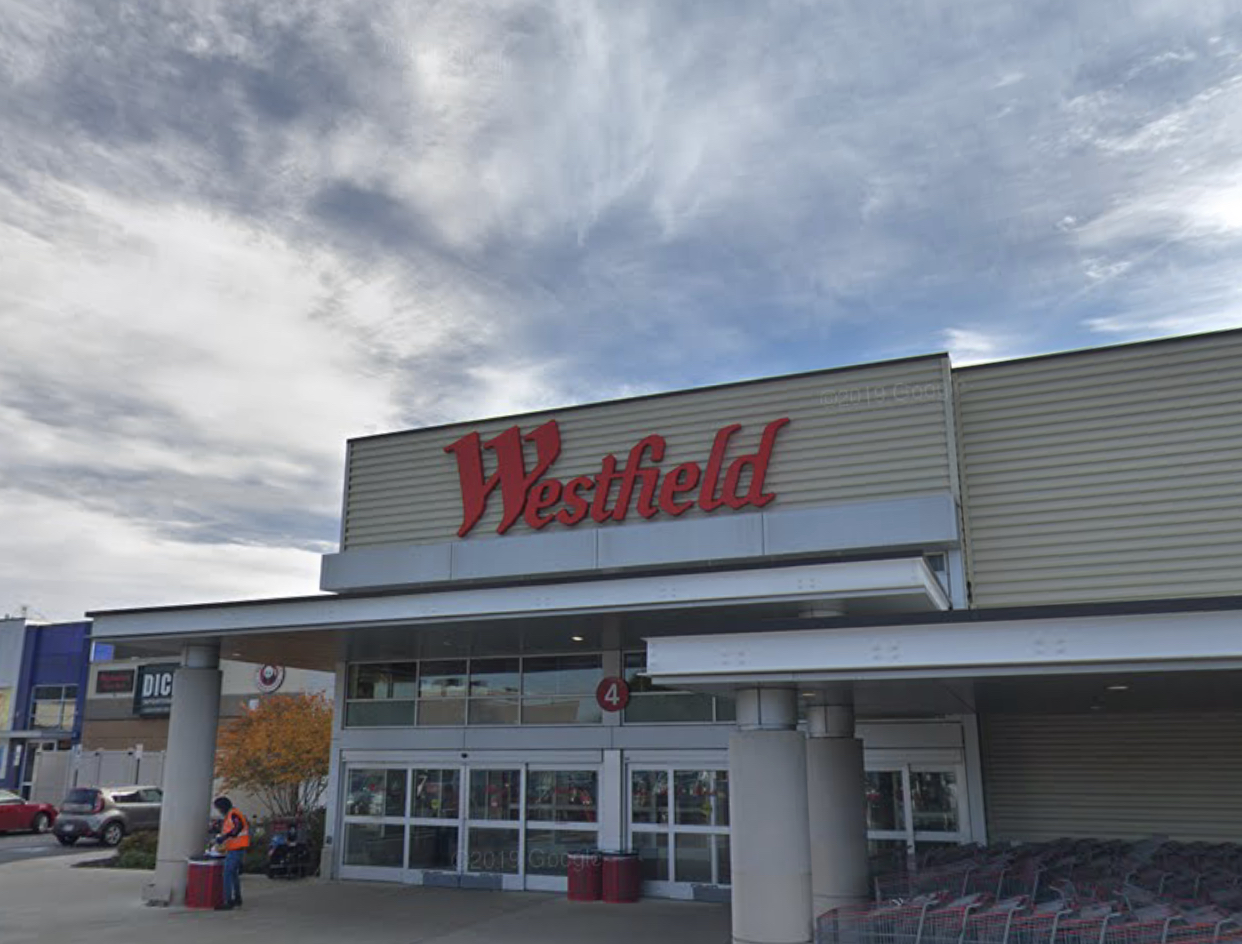
Per MCPD: As the holiday season coincides with a rise in respiratory virus cases, Montgomery County, in partnership with Por Nuestra Salud y Bienestar and Westfield Wheaton, will provide free COVID bivalent boosters and flu shots during the 2nd holiday “Boosterama” vaccine event. The event will take place from 10 a.m.-1 p.m. Saturday, Dec. 17, at Westfield Wheaton mall. Boosterama will be held outside of Carter’s on the 2nd floor of Westfield Wheaton. No appointment is needed. Pediatric booster shots will not be available at the event. Individuals who receive their COVID booster or a flu shot at the event will be eligible to win one of eight gift cards that can be used throughout Westfield Wheaton’s wide variety of retailers.
Respiratory illnesses such as RSV, flu and COVID are currently on the rise. While there is no vaccination for RSV, there are vaccinations available for flu and COVID. Boosterama events are part of a broader effort by the County to encourage residents to use common sense health measures, including staying up to date on vaccinations.
“The holiday season can be stressful for a variety of reasons,” said County Executive Marc Elrich. “This year, give yourself the gift of health. Boosterama is a convenient way you can receive the COVID booster and flu shot, saving you time and keeping you and your family safe. It is easy and helps to ensure your holidays remain free of respiratory viruses.”
To date, nearly 37 percent of County residents aged 50 and older have received the bivalent booster shot and nearly 21 percent of all residents have received the bivalent booster shot. If it has been at least two months since completing your primary series of COVID shots, you are eligible for a bivalent booster.
“The health and safety of our guests and staff is priority No. 1,” said Stuart Amos, senior general manager of Westfield Wheaton. “Boosterama is a free and convenient way to keep ourselves and community safe from the spread of respiratory viruses this holiday season. We are grateful for our partnership with Montgomery County in hosting this event.”
In addition to Boosterama, flu or COVID booster shots are widely available at locations throughout the community. Make an appointment or find other locations at GoVaxMoco.com. The County continues to provide free N-95 masks and rapid COVID test kits at multiple locations. The Montgomery County Department of Health and Human Services also offers tips to keep you and your family ‘COVID-Prepared’ this holiday season. For more information about Por Nuestra Salud y Bienestar, visit its website.
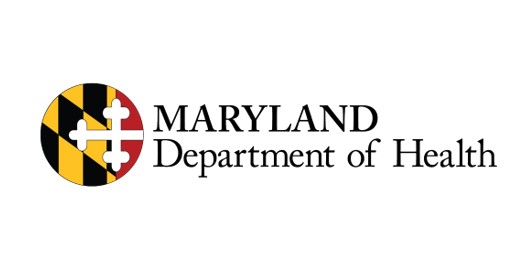
Per the State or Maryland: The Maryland Department of Health (MDH) today fully launched the Trained Military Assistance Provider (TMAP) Program, a new initiative to reduce suicides and increase lethal-means safety for service members and veterans. Developed by the Maryland Governor’s Challenge to Prevent Suicide Among Service Members, Veterans and their Families, this training is free to all Maryland-based primary care staff. The initiative was first launched as a pilot program in 10 Maryland primary care practices.
“Maryland’s service members and veterans benefit from specially targeted medical and mental health care,” said MDH Secretary Dennis R. Schrader (CAPT, U.S. Navy, Retired). “With this new resource, we aim to reach providers and practices and let them know we have the information and the tools to help this population before they reach a crisis.”
Maryland is home to approximately 350,000 veterans, 30,000 active duty service members and 18,000 reservists/national guard members, according to the Maryland Department of Veterans Affairs. According to the National Library of Medicine, 45% of people who died by suicide saw their healthcare provider the month prior and 84% the year prior to their death.
“Educating doctors and nurses, as well as front desk staff and lab techs, is vital. The healthcare team can be appropriately utilized to recognize a service member in need,” said Dr. Lisa Burgess, MDH Acting Deputy Secretary for the Behavioral Health Administration (BHA). “It is important that we train everyone on how to recognize warning signs as well as how to have conversations about safely storing weapons, what medications the patient can access, and what protections they can put in place.”
Participants are trained on mental health, suicide risk assessment and intervention. The curriculum helps providers better understand military and veteran culture, and create a safety plan in a military-culturally competent way.
Led by Maryland’s Commitment to Veterans (MCV) a division within BHA, TMAP offers 3.5 hours of online training, over 10 self-paced courses on topics including:
-
Military culture
-
Safety planning
-
Barriers to care
-
Lethal means counseling
-
Risk assessment tools
Once completed, providers will become “Trained Military Assistance Providers” and will receive a physical and a virtual toolkit with resources, including gun locks, locking medicine bags, as well as promotional materials.
TMAP training is provided by PsychArmor, a nationally recognized nonprofit leader and preferred training provider for military cultural awareness. Their podcast, Behind the Mission, will feature an interview with MCV Director Joy Ashcraft on December 6, 2022, to discuss the TMAP program.
Learn more or access the training: bit.ly/MDHTMAP.
###
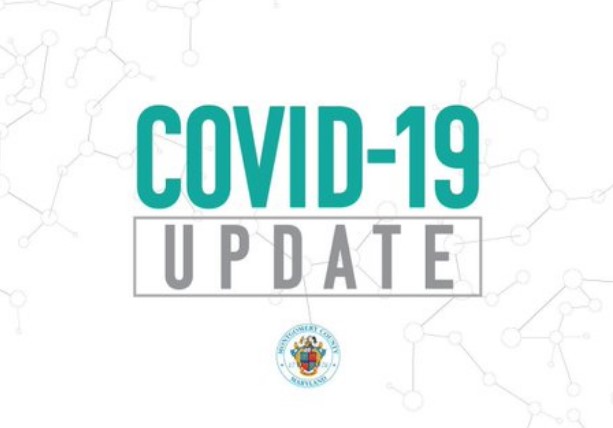
Per Montgomery County: The third holiday season with COVID-19 is underway, and everyone agrees that COVID fatigue exists. A few simple steps of caution can make being with family and friends enjoyable while reducing the risk of illness from COVID-19 and other respiratory illnesses such as colds and flu. Montgomery County’s Department of Health and Human Services offers the following things to keep in mind when planning for family gatherings:
- Make plans with the highest-risk person in the family and friends group in mind. Talk to family members ahead of time to figure out the plan. Encourage everyone to take additional precautions if a high-risk family member is attending. This means being up to date on all vaccinations and could include limiting the number of people invited. If the weather cooperates, think about moving meals outdoors.
- Get the new bivalent COVID-19 booster. Everyone who is eligible (ages 5 and up at least two months after their latest dose) should get the new booster to add an extra layer of protection. There are County-operated clinics and private providers offering both the Moderna and Pfizer bivalent boosters. Visit GoVaxMoco.com to see dates, times and locations.
- Pay attention to symptoms. In the days before the event, and especially the day of, watch out for COVID symptoms: sore throat, congestion, coughing, fatigue, headaches and muscle pain. People infected with BA.5, the dominant variant, are less likely to report losing their sense of taste and smell. If you feel sick, stay home—even if you have a negative rapid test.
- Test wisely. Everyone should test before a family gathering—the question is when to test and how many times. There are differing opinions on the exact timing and combination of tests that should be taken, but for the most accurate measure of whether or not you are contagious, take an at-home rapid test immediately before an event. If you have been wearing masks regularly, limiting contact and do not have symptoms, a negative test is a good measure. If you wake up with a scratchy throat and have interacted with someone who tested positive, consider staying home even if the tests are negative.
- Consider a mini-quarantine before a holiday gathering. Wear a mask in public indoor spaces and limit the time spent around crowds—for example, time trips to the grocery store for when they are not overwhelmingly packed. If traveling, check case counts for the area you are visiting.
- Mask up when traveling. Whether taking a plane, bus or train, make sure to wear a mask.
- Ventilate your space. If holding an event outside is not an option, increase air circulation and reduce the risk of trapping and transmitting the virus. Portable air purifiers with HEPA filters can be expensive, but even opening windows slightly can improve air flow.
The County continues to provide free N-95 masks and rapid test kits at multiple locations.
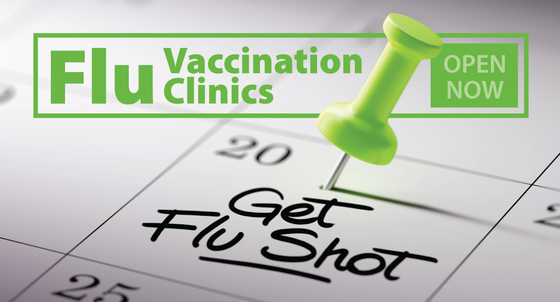
Per Montgomery County: Montgomery County will hold a free flu vaccination clinic for children from 1-4 p.m. on Wednesday, Dec. 7, at the Dennis Avenue Health Center, located at 2000 Dennis Ave. in Silver Spring. Children ages six months to 18 are eligible to receive vaccinations at the clinic. Getting an annual flu shot has been shown to reduce the risk of flu illness, hospitalization, and death. Flu vaccinations are also available through private health providers and at retail locations throughout the community. Find a flu vaccination at vaccines.gov. Although the vaccination clinic is free, appointments are required. The best way to prevent seasonal flu is to get vaccinated each year. In addition, good health habits can often help stop the spread of germs and prevent illnesses like the flu. Good health habits include:
- Always cover cough or sneeze with a tissue—then throw the tissue away or cough or sneeze into the inside of the elbow.
- Wash hands often with soap and water, especially after coughing or sneezing and before eating. Alcohol hand sanitizer (minimum 60 percent alcohol) will help if soap and water are not available.
- Avoid touching the eyes, nose, or mouth. These are places germs can enter the body easily.
- Avoid close contact with people who are sick. When sick, keep your distance from others to protect them from getting sick.
- Monitor yourself and family members for symptoms of fever which include chills, headache, sore throat, cough, body aches and vomiting or diarrhea.
- If you are sick, stay home from work, school or other public places until you are feeling well.
See the County’s flu website for more information.
Release ID: 22-597
Media Contact: Mary Anderson
Categories: Health

Per the State of Maryland—With Medicare Open Enrollment in full swing, Governor Larry Hogan and Maryland Department of Aging Secretary Rona E. Kramer are reminding Marylanders that lower premiums are available for Medicare Advantage and Medicare Part D prescription drug plans. In addition, beneficiaries can now compare 2023 Medicare health and drug coverage premiums and deductibles using the recently updated Medicare Plan Finder on Medicare.gov or by calling 1-800-MEDICARE. “Medicare plays a key role in providing health and financial security to many residents across the state who utilize the program,” said Governor Hogan. “We want to continue to ensure that every Marylander has access to affordable care and, ultimately, a better quality of life.”
More than 1 million Marylanders are enrolled in Medicare. The projected average premium for 2023 Medicare Advantage plans is $18 per month, a decline of nearly 8% from the 2022 average premium of $19.52. Medicare Advantage plans will continue to offer a wide range of supplemental benefits in 2023, including eyewear, hearing aids, preventive and comprehensive dental benefits, access to meals (for a limited duration), over-the-counter items, and fitness benefits. The average basic monthly premium for standard Part D coverage—which helps pay for both brand-name and generic prescription drugs—is projected to be $31.50, compared to $32.08 in 2022.
“With the new Plan Finder, anyone can review their current plan and compare it to 2023 options, allowing them to enroll in the best plan to meet their needs,” said Secretary Kramer. “It’s important that beneficiaries enroll before the December 7 deadline as we know that active, preventative health care can lead to healthy living and increased longevity.”
Medicare Open Enrollment began on October 15 and will run through December 7, 2022. Low-income seniors may qualify to receive financial assistance from the Medicare Savings Programs, which can help pay for Medicare premiums and deductibles, coinsurance, and copayments if people meet the conditions of eligibility. Maryland residents who are having difficulty comparing plans or determining whether they qualify for financial assistance can receive free, unbiased, and reliable information through the State Health Insurance Assistance Program (SHIP). To find a SHIP counselor, go to aging.maryland.gov.
For more information on Open Enrollment, Medicare Savings Programs, or the Medicare Plan Finder, visit https://www.medicare.gov or call 1-800-MEDICARE which is available 24 hours a day, seven days a week in English and Spanish as well as language support in more than 200 languages. People who want to keep their current Medicare coverage do not need to re-enroll.

